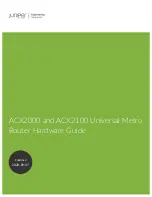
IP addresses
5.3 IPv6 address
SCALANCE W780/W740 to IEEE 802.11n Web Based Management
Configuration Manual, 08/2018, C79000-G8976-C267-13
85
Structure of the IPv6 address
The IPv6 protocol distinguishes between three types of address: Unicast , anycast and
multicast. The following section describes the structure of the global unicast addresses.
IPv6 prefix
Suffix
Global prefix:
n bits
Subnet ID
m bits
Interface ID
128 - n - m bits
Assigned address
range
Description of the location, also
subnet prefix or subnet
Unique assignment of the host in the net-
work.
The ID is generated from the MAC ad-
dress.
The prefix for the link local address is always fe80:0000:0000:0000. The prefix is shortened
and noted as follows: fe80::
IPv6 prefix
Specified in: RFC 4291
The IPv6 prefix represents the subnet identifier.
Prefixes and IPv6 addresses are specified in the same way as with the CIDR notation
(Classless Inter-Domain Routing) for IPv4.
Design
IPv6 address / prefix length
Example
IPv6 address: 2001:0db8:1234::1111/48
Prefix: 2001:0db8:1234::/48
Interface ID: ::1111
Entry and appearance
The entry of IPv6 addresses is possible in the notations described above. IPv6 addresses
are always shown in the hexadecimal notation.
















































